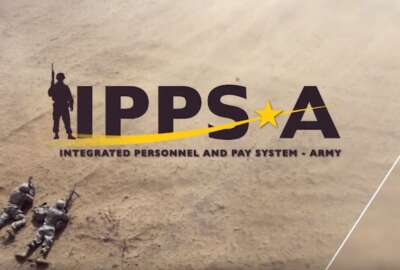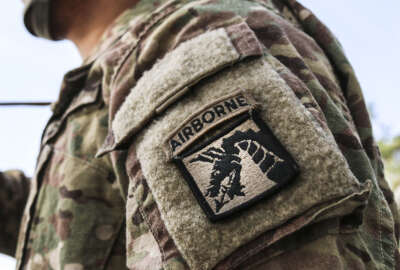IPPS-A expands services for Army payroll and human resources
The Army now has an IT system to handle HR for all its components -- but it still has work to do.
The Army’s new payroll and human resources system rolled out in January, but the team managing Integrated Personnel and Pay System-Army (IPPS-A) still has work to do in fine-tuning the massive IT program that provides basic services for over a million soldiers.
Part of the way the Army is refining the system involves improved user experience. In the past, soldiers had to make in-person appointments with human resource professionals. Now, they can now go online and create a ticket to have their issue resolved in a manner resembling a help desk.
“I can literally now go into this system and put a ticket in that would route to that human resource professional and have them address the ticket for you right there,” said Army Col. Robert Mikesh, IPPS-A project manager, at an AFCEA lunch event Friday. “So that’s new, it’s still something that’s being adopted. But it’s a powerful aspect of the system.”
It took the Army years to finally get to the point where it could integrate systems for the active-duty Army, National Guard and reserves into one program. IPPS-A is responsible for payroll and individual soldier’s paperwork for assignments, retirements, travel and a multitude of other activities that the Army documents.
While it has not evolved to the point of a fully-integrated mesh network, consumer access to data has at least moved from paper files to a topic-based consumption model where machine learning analyzes text data to determine cluster words for documents.
“I have, I think, 30 or 40 different topics that we push out there and publish, and then they subscribe to them and bring them down. We’re proud. It’s an evolving thing. We got a lot more to do in this area,” Mikesh said.
He said among the improvements to the system since it was launched is the speed at which data can be processed and moved into a digital archive.
“I can have something moved in three minutes, launching a signed form from the time we signed the form on a phone to the time it made it into the digital repository,” Mikesh said.
IPPS-A also changed the way soldiers get paid. The direct payment system allows for greater accuracy and auditability, and Mikesh said he brought in more staff to continue improving the Army pay system.
“We have about 34 different pay triggers in our system now and the full pay is over 99% accurate. Prior to this, it was in the 80 [percent range],” he said.
The journey to the current system took the Army eight years. The National Guard began using the system in 2020, but this is the first time the program integrated all the components of the Army. During the initial start-up phase before the program launched last December, the system ingested 800 million data elements during a 42-day brown-out period. The process was not without missteps and delays.
“We learned a lot. We had our bumps and bruises. We had hiccups and delays along this process. We were able to revamp, adjust the program up a little bit, get some of our changes in, bring our users back,” Mikesh said.
One change going forward will be the contracting strategy for the system. Mikesh said his office changed the contracting priorities, and is looking to expand administrative support for the project management office and increase technical management services. He said there are requests for information (RFIs) out to begin expanding those services.
“That’s where my architects, engineers, cyber data, those types of support contractors I need — those are actively in progress. Right now an RFI is on the street, we’re doing our market research with those,” he said.
Copyright © 2025 Federal News Network. All rights reserved. This website is not intended for users located within the European Economic Area.
Alexandra Lohr, a former staff member, covered the Defense Department for Federal News Network until September 2023.






